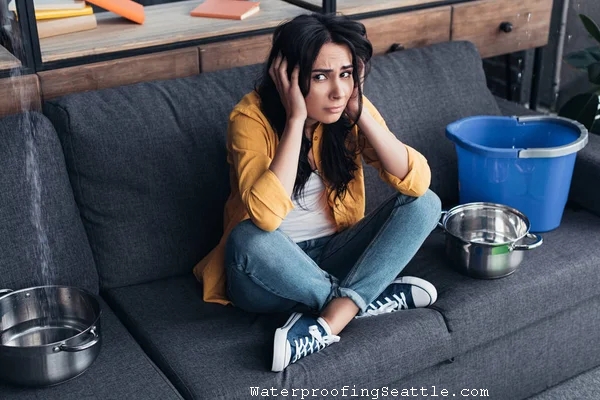
Are you prepared for a flood? It’s easy to think that water damage won’t happen to you, but the reality is that floods can strike anyone, anywhere. And if you live in King County, Washington, you are no exception. That’s why it’s crucial to understand the anatomy of a flood and how it can cause water damage in your home or business. Don’t wait until it’s too late ” take action now to protect yourself and your property.
First and foremost, floods are unpredictable. They can occur without warning, leaving you with little time to react. In fact, did you know that just a few inches of floodwater can cause thousands of dollars in damage? That’s right ” the cost of cleanup and restoration can quickly add up. Don’t let water damage drain your bank account ” be proactive and take steps to safeguard your property.
Secondly, it’s important to understand how water damage occurs during a flood. When floodwaters enter your home or business, they can seep into every nook and cranny, causing extensive damage to your walls, floors, and furniture. They can also lead to mold growth, which can be hazardous to your health. The good news is that there are steps you can take to mitigate water damage ” investing in flood insurance and installing flood barriers are just a couple of examples.
Another crucial element of understanding the anatomy of a flood is knowing how it affects your community. Floods can disrupt daily life in King County, Washington, causing road closures, power outages, and even evacuations. This can leave you feeling helpless and vulnerable. But by being proactive and preparing an emergency kit with essentials like food and water, flashlights, and a battery-powered radio, you can regain some control in the face of a natural disaster.
Furthermore, it’s essential to recognize the emotional toll that floods and water damage can take on individuals and families. The aftermath of a flood can be overwhelming ” from the stress of dealing with insurance claims to the loss of sentimental items. It’s important to reach out for support during this challenging time, whether it’s through friends and family or local community resources. Remember, you are not alone.
Protecting Your Home
Now that you understand the anatomy of a flood and how it can lead to water damage, let’s discuss steps you can take to protect your home. Firstly, consider investing in flood insurance. Standard homeowners’ insurance policies typically do not cover damage caused by floods, so having separate flood coverage is essential. Contact your insurance provider today to discuss your options.
In addition to flood insurance, it’s crucial to have a plan in place. Create an emergency preparedness kit with essentials like non-perishable food, water, flashlights, batteries, and a first aid kit. Make sure everyone in your household knows what to do in the event of a flood ” establish meeting points and evacuation routes.
Next, consider installing flood barriers around your property. These barriers can help redirect floodwaters away from your home or business, reducing the risk of water damage. And don’t forget about your gutters and downspouts ” keeping them clean and free of debris can help prevent water from pooling around your foundation.
Flood Cleanup and Restoration
In the unfortunate event that your home or business experiences water damage from a flood, it’s crucial to act quickly to mitigate further damage. Firstly, make sure it is safe to enter the area affected by water damage ” electrical hazards and structural instability can pose serious risks.
Once you have determined it is safe to enter the area, start by removing any standing water. Use pumps or wet/dry vacuums to extract as much water as possible. Be sure to wear protective gear, such as gloves and waterproof boots, to prevent any potential health risks.
After removing the standing water, it’s crucial to dry out the affected area thoroughly. Use fans, dehumidifiers, and open windows to promote airflow and aid in the drying process. This step is vital in preventing mold growth, which can occur within 24-48 hours of exposure to moisture.
Next, assess the damage and document it for insurance purposes. Take photographs of any affected areas and items, and keep a detailed list of damaged belongings. This will help streamline the claims process and ensure you receive proper compensation for your losses.
Seeking Professional Assistance
While it’s tempting to tackle water damage cleanup and restoration on your own, seeking professional assistance is often the best course of action. Professionals have the expertise, equipment, and knowledge to efficiently and effectively restore your property to pre-flood conditions.
When hiring a professional water damage restoration company, look for those certified by the Institute of Inspection Cleaning and Restoration Certification (IICRC). These certified professionals adhere to industry standards and best practices, providing you with peace of mind during this challenging time.
Additionally, a professional restoration company can help navigate the complicated insurance claims process. They will work directly with your insurance provider to ensure proper documentation, making the claims process smoother for you.
Moving Forward
While floods and water damage can be devastating, understanding the anatomy of a flood and taking proactive steps can protect your property and give you peace of mind. Don’t wait until it’s too late ” invest in flood insurance, create an emergency preparedness plan, and consider installing flood barriers. And remember, you don’t have to face the aftermath alone ” seek support from loved ones and professionals who can assist you on your path to recovery.
